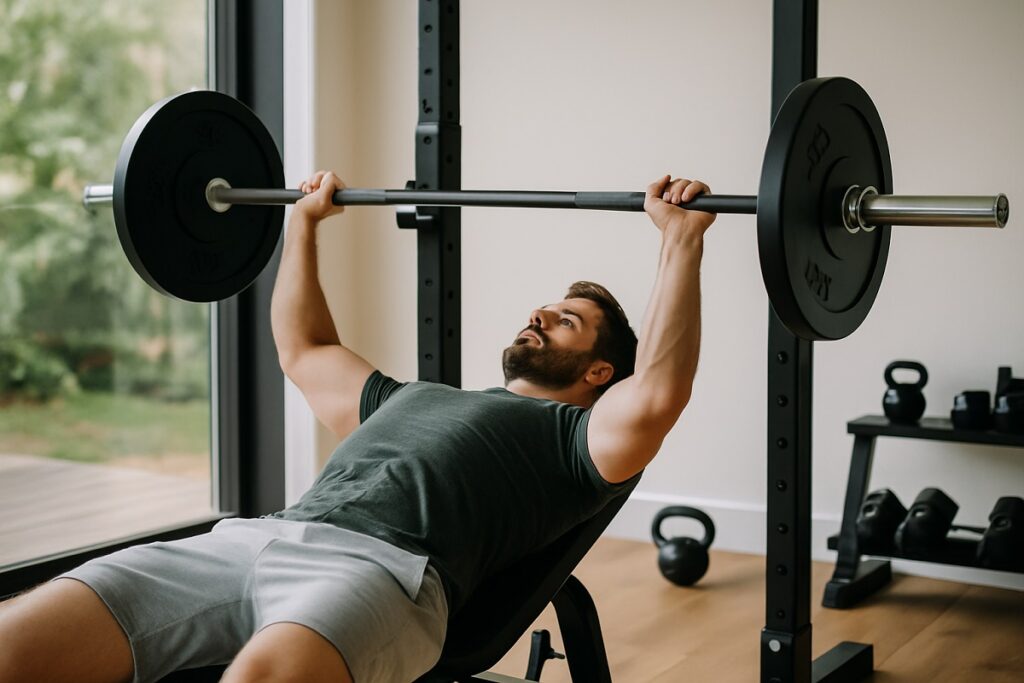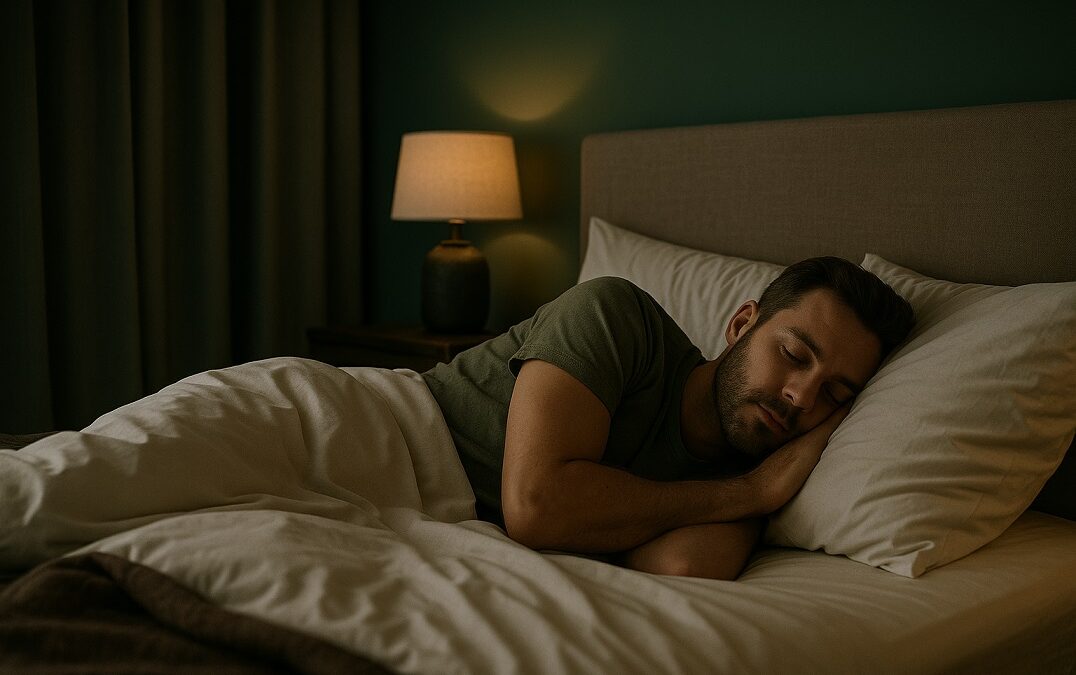Sleep is one of the most essential pillars of health. While we sleep, the body does far more than simply “switching off.” Deep inside, countless repair processes take place: cells regenerate, the brain consolidates memories, and the immune system strengthens its defenses. Sleep helps regulate hormones, supports metabolism, and keeps cardiovascular health in balance.
When sleep is adequate and restorative, we feel sharper, more energetic, and more resilient. Concentration, memory, and problem-solving all improve. On the other hand, when sleep is irregular or insufficient, the body quickly shows signs of wear: fatigue, irritability, brain fog, weaker immunity, weight gain, high blood pressure, and even anxiety.
Many people believe poor sleep is just part of modern life, something they must “accept.” But the truth is: you can take concrete steps to restore natural, restful sleep. You don’t need magic pills or expensive devices — the body has its own biological rhythm, and with the right habits, you can re-train it.
Below are ten strategies that are backed both by science and by practical experience. They will not change your nights overnight, but if applied consistently, they can transform your sleep and, with it, your days.
1. Keep a consistent sleep schedule
When it comes to sleep, consistency often matters more than occasional extra hours. Most adults need around 7–8 hours a night, but the exact number matters less than when those hours take place. Your body’s internal clock — the circadian rhythm — thrives on predictability.
If you go to bed at 10 PM on weekdays but push it to 1 or 2 AM on weekends, your body experiences what researchers call “social jetlag.” On Monday morning, it feels like you’ve just flown across time zones — except you didn’t travel anywhere. The result: grogginess, irritability, and disrupted hormone balance.
Consistency helps your brain learn when to release melatonin (the hormone that signals “night”) and when to boost cortisol (the hormone that signals “day”). Without that rhythm, your system is confused: you may lie awake even when tired, or wake up groggy even after “enough” hours.
Practical tips to build consistency:
-
Choose a target bedtime and wake-up time that you can realistically stick to every day — even on weekends.
-
If you need to adjust, do it gradually. Shift your schedule by 15–20 minutes every few days until you reach your goal.
-
Resist the temptation of “catch-up sleep” with long weekend lie-ins. They feel good in the moment but make Monday harder.
Think of it like training: you wouldn’t expect results by going to the gym once in a while at random hours. Sleep works the same way. Regularity builds strength into your biological rhythm.
2. Start your day with natural light
One of the most powerful signals for your internal clock is light. Our biology evolved to align with the rising and setting of the sun. Light in the morning acts like a switch: it tells your body, “The day has begun.” This signal anchors your circadian rhythm, helping you feel awake in the morning and sleepy in the evening.
When you miss this cue — for example, by staying indoors with only artificial lighting — your rhythm weakens. Cortisol, the hormone that should energize you in the morning, may not rise as strongly. Melatonin, which should rise at night, may be delayed. The result: sluggish mornings and restless nights.

Practical ways to use morning light:
-
Step outside within the first 30–60 minutes after waking. Even 15–20 minutes of daylight is enough to send a strong signal to your body clock.
-
If possible, face east or where the sun is visible. Even on cloudy days, outdoor light is 10–20 times stronger than indoor bulbs.
-
Combine this with gentle movement — like a short walk, light stretching, or even just standing in sunlight on a balcony — to boost circulation and energy.
-
If mornings are dark in winter, consider a light therapy lamp as a substitute. But whenever possible, natural light is far superior.
This simple practice, repeated daily, creates a rhythm your brain and body can rely on. In the evening, you’ll find it easier to fall asleep — not because you forced yourself, but because your biology was properly “set” in the morning.
3. Limit daytime sleep
Napping has its place — but it’s a double-edged sword. A short, well-timed nap can refresh you. But long or late naps interfere with your ability to sleep at night.
Why? Because sleep depends on two processes: your circadian rhythm and your sleep pressure. Sleep pressure is like a timer that builds the longer you are awake. When you nap too long or too late, you release some of that pressure, making it harder to fall asleep at bedtime.
How to use naps wisely:
-
Keep naps short: 15–20 minutes is enough to recharge without entering deep sleep stages.
-
Nap early: before 3 PM is ideal. Later naps push back your sleepiness at night.
-
Watch your purpose: if you’re napping daily because nights are too short, the solution is to improve night sleep, not to patch it with daytime rest.
Of course, there are exceptions. Shift workers, new parents, or those recovering from illness may rely on strategic naps. But for most healthy adults, long or irregular naps are a sign that the core problem is insufficient or poor-quality night sleep.
Think of naps as a small snack — useful when needed, but not a replacement for a full meal. Your nightly sleep is that full meal. Protect it.
4. Optimize your bedroom environment
Your bedroom is more than just a place to lie down — it’s the stage where your body performs its nightly recovery. If the environment is wrong, even the best intentions won’t bring restful sleep. Noise, light, or heat can keep you awake, or prevent you from reaching the deeper stages of rest.
The three pillars of a sleep-friendly bedroom:
-
Darkness. Darkness signals your brain that it’s time to release melatonin. Even small amounts of light — a streetlamp through the window, the glow of a phone charger — can interfere with this process. Use blackout curtains, blinds, or a sleep mask. Remove electronics that emit light.
-
Quiet. Sudden noise is one of the biggest disruptors of deep sleep. If silence isn’t possible, try earplugs or a white noise machine. Even the steady hum of a fan can mask disruptive sounds.
-
Cool temperature. The body naturally lowers its temperature at night. A cooler room — ideally around 18–20°C (64–68°F) — supports this process. If the room is too hot, you may toss and turn. If too cold, your body fights to stay warm. Find the balance that works for you.
Extra touches:
-
Fresh air and ventilation make the room feel more restorative.
-
A comfortable mattress and pillow suited to your body type.
-
Calming scents such as lavender or chamomile may also help signal relaxation.
Your bed should be for two things only: sleep and intimacy. Avoid working, eating, or scrolling your phone there. Over time, this creates a strong mental link: when you get into bed, your body knows it’s time to sleep.
5. Pay attention to your diet
What you eat and when you eat it has a direct influence on your sleep quality. A heavy, greasy, or spicy dinner too close to bedtime can keep your digestive system working overtime, disrupting rest. On the other hand, a nutrient-rich diet helps your body regulate the very hormones and neurotransmitters that govern sleep.
Guidelines for better sleep through nutrition:
-
Time your meals. Try to finish dinner at least 2–3 hours before bed. This gives your body time to digest before rest.
-
Eat light in the evening. Choose easily digestible foods — lean proteins, vegetables, whole grains. Avoid heavy or fried dishes late at night.
-
Support sleep chemistry. Certain foods provide tryptophan, magnesium, or melatonin precursors — nutrients linked to better rest. Examples: turkey, nuts, seeds, oats, bananas.
-
Limit sugar and refined carbs. Blood sugar spikes followed by crashes can cause night-time awakenings.
Hydration also matters. Being dehydrated can make it harder to fall asleep, but drinking too much late in the evening may wake you for bathroom trips. Aim to hydrate steadily during the day, then reduce intake in the last 1–2 hours before bed.
Think of food as part of your sleep hygiene. What you put into your body during the day directly shapes the quality of your night.
6. Avoid stimulants and alcohol
Caffeine is the world’s most widely used stimulant, and for good reason: it improves alertness and energy. But the same property that helps you through the morning can work against you at night.
Caffeine has a half-life of about 6 hours — which means that even if you drink a coffee at 4 PM, half the caffeine may still be active in your body at 10 PM. And for sensitive people, even earlier consumption can interfere with deep sleep. You may technically “fall asleep,” but the caffeine can prevent your brain from reaching the most restorative phases.
Other stimulants to watch:
-
Tea, cola, and energy drinks also contain caffeine.
-
Nicotine — found in cigarettes or vapes — is also a stimulant. Many smokers think an evening cigarette relaxes them, but physiologically it signals the nervous system to stay alert.
Alcohol is another common trap. A glass of wine or beer may make you drowsy, but alcohol disrupts sleep cycles. It suppresses REM sleep, which is essential for memory, creativity, and emotional balance. As the alcohol wears off during the night, you may wake up more frequently, leaving you groggy in the morning.
Practical strategy:
-
Avoid caffeine at least 6–8 hours before bedtime. For most people, this means no coffee, tea, or energy drinks after 2 PM.
-
Reduce or eliminate nicotine, especially in the evening.
-
If you drink alcohol, do so in moderation and not right before bed.
Restful sleep depends on your body being allowed to switch into recovery mode. Stimulants and alcohol keep the system artificially activated or unbalanced — and rob you of the true depth of rest.
7. Exercise regularly — but not too late
Movement is one of the best natural tools for improving sleep. Exercise helps regulate hormones, reduces stress, and promotes the body’s need for recovery. People who are physically active during the day typically fall asleep faster and enjoy deeper, more restorative rest.
But the timing and intensity of exercise matter. A heavy workout too close to bedtime can raise body temperature, heart rate, and stress hormones like adrenaline — exactly the opposite of what you need to fall asleep.

How to use exercise for better sleep:
-
Regular activity: Aim for at least 150 minutes of moderate exercise per week (walking, cycling, swimming, strength training).
-
Earlier is better: Morning or afternoon exercise supports energy and makes nights calmer.
-
Avoid late intensity: Try to finish vigorous training at least 1–2 hours before bed. Light stretching or yoga, however, can be calming in the evening.
-
Consistency matters: Sporadic exercise doesn’t regulate sleep as effectively as a regular routine.
Remember, exercise is not just about fitness — it’s a signal to your entire system. It tells your body to strengthen by day and recover by night. Balanced movement makes the transition into sleep smoother and more natural.
8. Reduce screen time in the evening
For most of human history, sunset meant darkness — a powerful signal for the body to prepare for rest. Today, however, our evenings are filled with artificial light, and the most disruptive kind comes from the screens we use daily.
Phones, tablets, computers, and TVs all emit blue light, which suppresses melatonin, the hormone that tells your brain it’s time to sleep. Even an hour of screen use before bed can shift melatonin release and delay sleep onset. Add to this the mental stimulation of scrolling, emails, or late-night shows, and you have a recipe for restless nights.
Practical adjustments:
-
Screen-free hour: Aim to put away devices at least 60 minutes before bedtime. Replace them with calming rituals like reading, journaling, stretching, or conversation.
-
Blue-light filters: If you must use devices, enable night mode or blue-light filters — but remember, these reduce only part of the problem. The mental stimulation of content is just as disruptive.
-
Bedroom rule: Keep phones and laptops out of the bedroom. Charge them in another room. Make the bedroom a sanctuary for rest.
Think of screens as a stimulant disguised in pixels. By limiting their use in the evening, you allow your body to switch into its natural recovery rhythm — something no app or filter can truly replace.
9. Use natural aids with caution
When sleep becomes difficult, many people look for shortcuts. Herbal teas, supplements, or over-the-counter pills promise quick fixes. While some natural aids can help, they are not a substitute for healthy sleep habits — and in the long run, relying on them may even mask deeper issues.
Common natural aids:
-
Herbal teas: Chamomile, valerian root, or lemon balm may have calming effects and can become a relaxing part of a bedtime ritual.
-
Melatonin: Often marketed as a sleep hormone, melatonin can be effective for specific cases (jet lag, shift work). But regular use in healthy adults is controversial, as the body can adapt.
-
Magnesium: Supports relaxation and muscle function. For some, evening supplementation helps reduce cramps or restlessness.
Important cautions:
-
Natural doesn’t mean harmless. Herbal remedies can interact with medications or cause side effects.
-
Supplements don’t fix lifestyle issues. If late-night caffeine, irregular schedules, or screen time are the true causes, no pill will solve them.
-
Dependence is a risk. If you cannot sleep without a tea, pill, or spray, your body may start to believe it cannot sleep without external help.
The foundation of better sleep is still rhythm, environment, and behavior. Natural aids can support the process — but they should be a complement, not a crutch.
10. Manage stress effectively
Stress is one of the most common enemies of good sleep. The mind races, the heart beats faster, and even if your body is tired, your thoughts won’t let you rest. The cruel paradox is that worrying about not sleeping creates more stress — and the harder you try, the less likely you are to fall asleep.
Breaking this cycle means giving your nervous system tools to shift from fight-or-flight into rest-and-digest. You cannot always remove stress from life, but you can train your body to handle it better, especially in the evening.
Practical techniques for stress management before bed:
-
Deep breathing. Slow, controlled breathing lowers heart rate and blood pressure. Try inhaling through the nose for four counts, holding for four, and exhaling through the mouth for six to eight.
-
Progressive muscle relaxation. Start at your toes, tense each muscle group for a few seconds, then release. Work upward through the body. This relieves hidden tension and creates physical calm.
-
Visualization. Imagine a peaceful place — a quiet beach, a mountain path, or a forest. Engage your senses: hear the waves, feel the wind, see the colors. This mental imagery redirects focus away from stress.
-
Mindfulness meditation. Sit or lie quietly, focusing on your breath or bodily sensations. When thoughts drift, gently bring them back. Practicing this regularly rewires how the brain responds to stress.
-
Evening journaling. Write down worries or to-do lists before bed. By putting thoughts on paper, you unload them from your mind.
Stress will never fully disappear. But by training your body and mind to downshift, you build resilience — and sleep comes more easily.
Final thoughts — The Arnold Method perspective
Sleep is not a luxury. It is a biological necessity, as vital as food, water, and movement. Without deep, restorative rest, no diet, no workout, no supplement can bring lasting health.
The tips above are not quick fixes. They are habits — small, practical actions that re-align your biology with its natural rhythm. Applied consistently, they can transform not only your nights, but your days: clearer thinking, balanced emotions, stronger immunity, and sustainable energy.
That is why sleep is the first pillar of the Arnold Method. Before we talk about nutrition, exercise, or performance, we must first restore the foundation: healthy, restorative rest.
👉 The 21-Day Sleep Reset program will soon be available to guide you step by step. Want early access? Join the waitlist here and be among the first to experience it.

